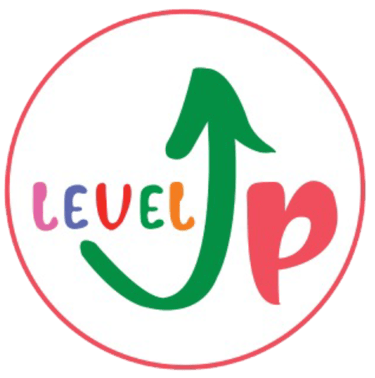10 AI Prompts for Phonics Teachers to Create Engaging, Ready-to-Use Lessons
Discover 10 powerful AI prompts for phonics teachers that simplify lesson planning, storytelling, and classroom creativity. Use these prompts to make phonics fun, interactive, and effective!
AI FOR PHONICS TEACHERS
LevelUp Online Education
10/7/20256 min read


Introduction
Teaching phonics can be a rewarding part of helping young children learn to read. Phonics focuses on the sounds that letters make and how they combine to form words. As a teacher, you want lessons that keep students excited and involved. This is where AI prompts for phonics teachers come in. They allow you to use artificial intelligence tools, like ChatGPT, to quickly create customized, engaging lessons. In this blog post, we will explore 10 specific AI prompts for phonics teachers. Each one is designed to produce ready-to-use materials that fit your classroom needs. Whether you are new to phonics or looking for fresh ideas, these prompts will save you time and make learning fun for kids. By the end, you will see how AI prompts for phonics teachers can transform your teaching routine.
Why Use AI Prompts for Phonics Lessons?
Before diving into the prompts, let's understand the benefits. Phonics lessons often involve activities like sound blending, word building, and games. Creating these from scratch takes effort. AI prompts for phonics teachers let you input simple instructions to an AI tool, and it generates detailed plans, worksheets, or activities. This approach ensures lessons are age-appropriate and aligned with phonics standards. For example, you can specify the letter sounds or skill level, and the AI tailors the content. Kids stay engaged through interactive elements, while you focus on guiding the class. Now, let's look at the 10 prompts.
Prompt 1: Generating a Basic Letter Sound Introduction
Start with the basics using this prompt: "Create a simple phonics lesson plan for kindergarten students introducing the short vowel sound 'a' as in 'apple'. Include objectives, a warm-up activity, main teaching steps, practice exercises, and a fun closing game. Make it engaging with visuals and hands-on elements."
This prompt helps teachers build foundational lessons. When you use it in an AI tool, it outputs a structured plan. For instance, the AI might suggest a warm-up where kids mimic the sound of an apple being crunched. The main part could involve flashcards with pictures starting with the 'a' sound. Practice might include blending cards to form simple words like "cat" or "hat." The closing game could be a treasure hunt for 'a' objects. This keeps kids active and reinforces the sound through play. It's accurate because it focuses on one sound at a time, which is key in phonics progression. Teachers can adapt the generated plan easily for their group size.
Prompt 2: Creating Blending Activities for Consonant-Vowel Pairs
Try this: "Design an interactive phonics activity for first graders on blending consonant-vowel pairs like 'b-a' to make 'ba'. Include step-by-step instructions, materials needed, differentiation for different skill levels, and assessment ideas. Ensure it's fun and uses movement."
Blending is essential for reading, as it teaches kids to combine sounds into words. This AI prompts for phonics teachers example generates activities that move beyond worksheets. The AI might describe a game where students stand in lines to represent sounds, physically "blending" by joining together. Materials could include letter cards or props like puppets. For differentiation, it suggests easier pairs for beginners and longer blends for advanced kids. Assessment might involve kids recording their blends on a voice app. This prompt ensures accuracy by specifying phonics rules, like smooth transitions between sounds, helping teachers deliver precise instruction without extra planning.
Prompt 3: Developing Word Family Worksheets
Use: "Generate a printable worksheet for second graders on the word family '-at', including pictures, fill-in-the-blanks, and a rhyming game. Cover words like cat, hat, mat, and bat. Add teacher notes on how to introduce and extend the activity."
Word families teach patterns in words, making spelling easier. This prompt creates ready-to-print resources. The AI output typically includes visuals to aid recognition, like drawings of a cat wearing a hat. Fill-in-the-blanks reinforce spelling, while the rhyming game encourages oral practice. Teacher notes might explain starting with reading the words aloud, then having kids create sentences. It's engaging because kids relate to familiar objects. For accuracy, the prompt limits to real words in the family, avoiding nonsense words unless specified. This saves teachers time on designing materials that align with curriculum goals.
Prompt 4: Designing a Phonics Story for Sound Practice
Prompt: "Write a short, illustrated story for preschoolers featuring the digraph 'sh' in words like ship and fish. Include comprehension questions, vocabulary list, and suggestions for acting it out in class."
Stories make phonics memorable. This AI prompts for phonics teachers focuses on digraphs, which are two letters making one sound. The AI generates a tale, perhaps about a shy ship on a fishing trip, highlighting 'sh' words. Illustrations are described for easy drawing or printing. Comprehension questions check understanding, like "What did the ship see?" A vocabulary list defines words, and acting suggestions turn it into drama. Kids love performing, boosting confidence in pronunciation. Accuracy comes from embedding the target sound naturally, ensuring repeated exposure without forcing it. Teachers can use this for whole-group reading or small-group extensions.
Prompt 5: Building a Digraph Sorting Game
Input: "Create a sorting game lesson for first graders on the digraphs 'ch' and 'th'. Provide printable cards with pictures and words, rules for the game, and ways to score points. Include extensions for writing practice."
Games reinforce sorting skills in phonics. This prompt produces a competitive yet fun activity. The AI might list cards like "chair" for 'ch' and "this" for 'th', with images. Rules could involve teams sorting into bins, earning points for correct placements. Extensions encourage writing sentences with sorted words. It's engaging through teamwork and rewards. For accuracy, the prompt specifies common digraphs and examples, preventing errors in sound association. Teachers benefit from the complete setup, ready for immediate use in centers or as a class activity.
Prompt 6: Crafting Silent Letter Lessons
Try: "Develop a phonics mini-lesson for third graders on silent 'e' in words like cake and bike. Include examples, a rule explanation, practice sentences, and a creative drawing activity where kids illustrate words."
Silent letters add complexity to phonics. This prompt breaks it down simply. The AI explains the rule: silent 'e' makes the vowel long. Examples progress from simple to compound words. Practice involves reading and completing sentences. The drawing activity lets kids visualize, like sketching a bike ride. This hands-on element keeps engagement high. Accuracy is ensured by focusing on the "magic e" rule, a standard phonics concept. Teachers can use the generated content for direct instruction, followed by independent practice, making lessons structured and effective.
Prompt 7: Creating R-Controlled Vowel Activities
Prompt: "Design a hands-on activity pack for second graders on r-controlled vowels 'ar' as in car. Include matching games, word hunts, and a song or chant. Provide differentiation for struggling readers."
R-controlled vowels change vowel sounds with 'r'. This AI prompts for phonics teachers generates varied activities. Matching games pair pictures and words, word hunts involve finding 'ar' in books, and a chant reinforces rhythmically. Differentiation might include audio support for strugglers. Kids stay motivated with music and exploration. The prompt ensures accuracy by using consistent examples and avoiding blends with other rules. Teachers get a pack that's versatile for different settings, like indoor or outdoor use.
Prompt 8: Planning a Multisyllable Word Breakdown
Use: "Create a lesson plan for fourth graders breaking down multisyllable words with prefixes like 'un-' and 're-'. Include chunking strategies, examples, group practice, and a quiz template."
As kids advance, phonics includes syllables and morphemes. This prompt teaches decoding longer words. The AI outlines chunking: dividing words into parts. Examples like "unhappy" show meaning changes. Group practice involves building words collaboratively. The quiz tests application. It's engaging through peer work. Accuracy stems from phonics-based strategies, aligning with reading standards. This helps teachers scaffold complex skills efficiently.
Prompt 9: Developing Vowel Team Resources
Prompt: "Generate resources for first graders on the vowel team 'ea' as in eat. Include flashcards, a blending ladder activity, and extension worksheets for writing. Add tips for pronunciation."
Vowel teams make diphthong sounds. This AI prompts for phonics teachers creates visual aids. Flashcards show pictures, blending ladders build words step-by-step, and worksheets practice writing. Tips cover the long 'e' sound. Activities are interactive, like racing to blend. Accuracy focuses on the specific team, preventing confusion with similar sounds. Teachers can implement these for targeted practice, enhancing fluency.
Prompt 10: Integrating Phonics with Technology
Final prompt: "Design a digital phonics lesson using free tools for kindergarteners on the sound 'm'. Include app recommendations, interactive slides, and follow-up offline activities."
Technology modernizes phonics. This prompt blends digital and traditional. The AI suggests tools like Google Slides for sound matching or apps like ABC Mouse. Slides might have clickable sounds, followed by offline crafts like making 'm' magnets. It's engaging for tech-savvy kids. Accuracy ensures the focus remains on the sound, with clear instructions. Teachers without tech access can adapt to basics, making it flexible.
Conclusion
These 10 AI prompts for phonics teachers offer a powerful way to create engaging, ready-to-use lessons. From basic sounds to advanced decoding, they cover key phonics areas. By using AI, you customize content to your students' needs, saving time while keeping classes dynamic. Experiment with these prompts, tweak them as needed, and watch your kids' reading skills grow. Incorporating AI prompts for phonics teachers into your routine can make teaching more enjoyable and effective. Start today and see the difference!
Love these prompts? You’ll get 50 more structured prompts (covering lesson planning, tricky words, classroom activities, parent communication, and digital content) in our AI Prompts e-Book for Phonics Teachers — designed to save hours and spark creativity.
Northern Hills Supremus, A-306, opp. Northern Heights, Dahisar East, Mumbai, Maharashtra 400068
LevelUp
admissions@leveluponline.in
© 2025. All rights reserved


levelup_online_education




LevelUp Online Education









